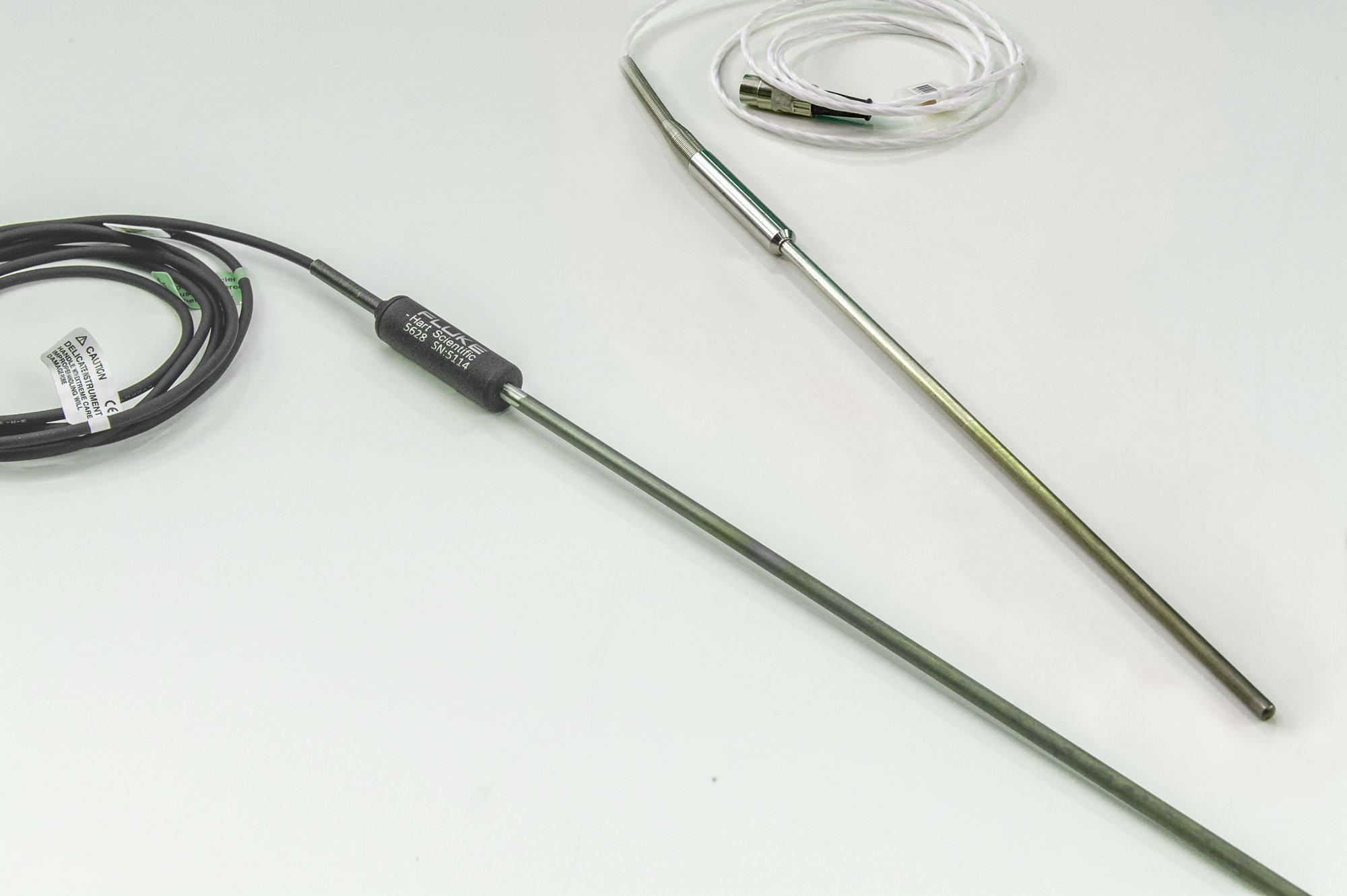What is a PRT / SPRT?
A Platinum Resistance Thermometer (PRT) or Standard Platinum Resistance Thermometer (SPRT) is a highly precise temperature sensing device that uses platinum's predictable resistance changes as the temperature varies. Known for their accuracy and stability, PRTs or SPRTs are widely used in industrial and laboratory environments where precise temperature measurements are essential.

Why Choose Platinum?
Platinum is chosen due to its stable electrical resistance across a broad temperature range and its resistance to corrosion and oxidation, ensuring long-term reliability. As temperature rises or falls, the resistance of the platinum element changes in a very consistent manner, which can be precisely measured and converted into a temperature reading.
Uses of PRTs and SPRTs in Calibration Laboratories
In calibration laboratories, both PRTs and SPRTs play critical roles, but they are applied differently based on accuracy requirements:
- SPRTs: As primary standards, SPRTs are essential for establishing a reference point in temperature calibration. They are used to calibrate other temperature-sensing devices with the highest degree of precision. Calibration laboratories often use SPRTs to set benchmark temperatures in the most stringent applications, such as scientific research or manufacturing processes that require exact temperature control.
- PRTs: While not as precise as SPRTs, PRTs are commonly used as secondary calibration standards. They are reliable and durable, making them suitable for the routine calibration of industrial thermometers and sensors. PRTs help ensure that other instruments perform within acceptable tolerances.
Differences Between SPRTs and PRTs
Calibration laboratories typically have one, or multiple SPRTs or PRTs. Though they operate on the same fundamental principle, they differ in application, precision, and construction standards:
- Standard Platinum Resistance Thermometers (SPRTs):
- Purpose: Primarily used in metrological laboratories as calibration standards for other thermometers.
- Precision: SPRTs are designed for extreme accuracy, often within a few millikelvins. Direct comparisons to ITS-90 (International Temperature Scale of 1990) fixed points provide individually characterized coefficients for each probe, making them the go-to standard for primary calibration.
- Construction: Typically, SPRTs are made with the purest platinum wire in a very specific, delicate structure. The goal is to minimize any environmental effects (mechanical stress, impurities) that could alter the resistance.
- Temperature Range: SPRTs can be used in a narrow temperature range to maintain their extremely high accuracy, but also can cover ranges up to e.g., -200°C to 962°C with excellent precision.
- Platinum Resistance Thermometers (PRTs):
- Purpose: PRTs are more commonly used in industrial and secondary calibration applications. While still highly accurate, they are designed for robustness and repeated use in demanding environments.
- Precision: PRTs offer excellent accuracy, though they are not as precise as SPRTs. They are sufficient for most industrial applications where ultra-high precision isn’t necessary.
- Construction: PRTs are often built with a more durable structure, making them less delicate than SPRTs. This allows them to withstand the harsher conditions of industrial use without significant degradation in performance.
- Temperature Range: PRTs generally cover a range of -200°C to 420°, but PRT can also be made directly meet the needs of your application.
Uses of PRTs and SPRTs in Calibration Laboratories
In calibration laboratories, both PRTs and SPRTs play critical roles, but they are applied differently based on accuracy requirements:
- SPRTs: As primary standards, SPRTs are essential for establishing a reference point in temperature calibration. They are used to calibrate other temperature-sensing devices with the highest degree of precision. Calibration laboratories often use SPRTs to set benchmark temperatures in the most stringent applications, such as scientific research or manufacturing processes that require exact temperature control.
- PRTs: While not as precise as SPRTs, PRTs are commonly used as secondary calibration standards. They are reliable and durable, making them suitable for the routine calibration of industrial thermometers and sensors. PRTs help ensure that other instruments perform within acceptable tolerances.
Conclusion
Both PRTs and SPRTs are indispensable in temperature measurement and calibration. While SPRTs provide unmatched precision for setting calibration standards, PRTs offer robust performance and excellent accuracy for daily use. Together, they form the backbone of accurate temperature measurement in both industrial and laboratory environments.
Looking for a PRT & SPRT Calibration Service? Take a closer look at how we calibrate PRT & SPRT temperature units here.
You Can Rely on Bagan Calibration Services
We pride ourselves on our premier customer service, which has allowed us to maintain relationships with customers since the beginning. Many of our customers range from Fortune 500 companies to privately owned specialty companies across the U.S.A and other countries. Our proprietary Management Information and Reporting System, BaganTrack gives you direct access to your customer service representative, certificates, master gauge list, and more. Additionally, BaganTrack is compliant to ISO 9001:2015. It is our goal to give you the best experience possible as your calibration and technical service provider.
Need Calibration Services? Fill out the form below and one of our specialists will provide assistance!
©2025 Richard J. Bagan, Inc. All rights reserved.